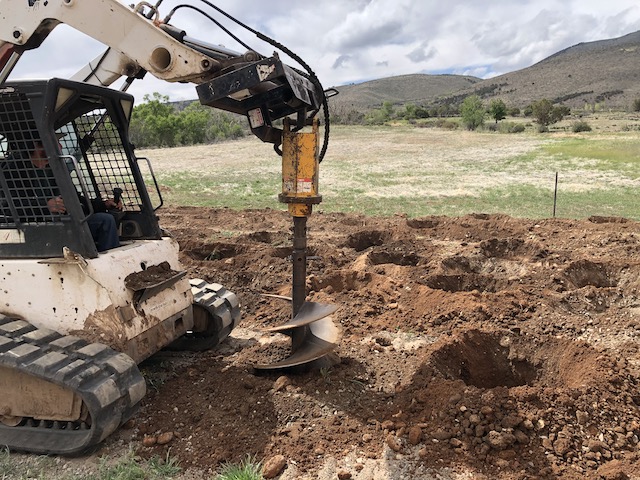
1st year Vineyard - Part II
The time had come to dig holes for the grape rootstock. Complete to date as covered in Part I; vineyard site and grape selection, site prep, vine row, and hole layout, and determine how to plant the rootstock. To do; plant, install irrigation, monitor growth, build wildlife fence, and winter prep.
Nothing quite prepared me for the day of digging holes with a 2-foot diameter auger. Activity began with the truck hauling the backhoe failing to make it up the drive. The drive is steep right past a sharp hairpin turn. Problem solved. Unload the backhoe and drive it separately up the drive.
“You’ve got to get up every morning with determination if you’re going to bed with satisfaction.”
George Horace Lorimer

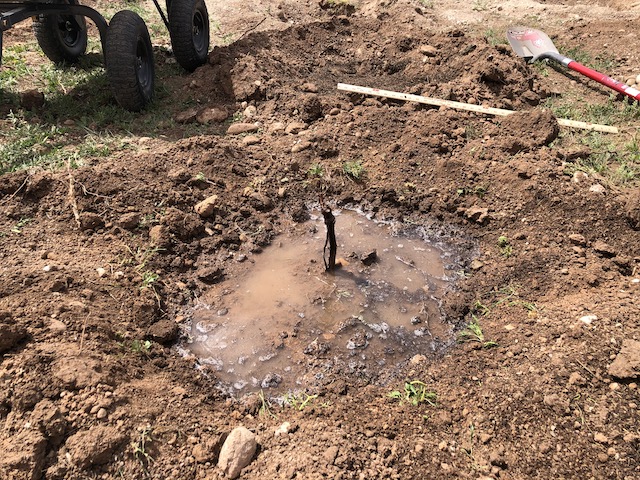
On to the dig. More often than not, the auger struggled to get past one or several large stones. The auger would “cough up” an offending stone, belching it to the side of the growing hole. Or if it couldn’t bring a stone up, the auger would need to shift to one side or another and try again. There were a few areas we had to avoid altogether. It wasn’t uncommon for me to jump in a hole, and retrieve a large stone. Slowly but surely, we worked down the rows. Many of the holes ended up uneven along the rows, due to the stone challenges. The holes at 24″+ in diameter, allowed the rootstock to be moved within the hole when planting. This assisted in attempting to keep a straight line from hole to hole but it was far from perfect. Upon completion and looking down many of the rows, it looked as if a drunken sailor had laid them out.
There was another issue locals had warned me about, caliche. In our area of the world or at least in my vineyard, it presented itself as a layer of hard sediment approximately one inch thick of calcium carbonate. Think of it as hardpan. White in color, the caliche presented like particle board. I often grumbled to myself, “did someone bury a bunch of drywall here”? In the areas where it was located, the caliche was approximately a foot deep. I was advised not to plant on top of it. You must poke through, so the vine roots could grow and spread underneath. Caliche tends toward high pH, which can affect healthy growth. When planting, you must be careful about limiting the caliche in the soil surrounding the roots. I was a bit distressed but not deterred.


The real work began a few days later with the rootstocks’ arrival. I had arranged delivery of compost mixed with soil. The compost supplement would enhance my existing clay soil when planting. Over the course of several days, I’d soak the rootstock in water, then plant mixing both existing soil and compost mix. The amount of the compost mix was limited, so I had to restrict the amount used in each hole. I kept the water hose handy, adding water when building up the soil.
Compared to the small size of the rootstock, the holes were huge. While this is good, providing plenty of room for root growth, the effort involved in backfilling was laborious. As a challenge and somewhat distressing, were the holes with higher levels of caliche. In a perfect world, I should have used all-new soil when backfilling. We don’t live in a perfect world. All I could do was remove as much caliche as possible. Then use a higher percentage of the compost mix when backfilling, especially under and around the roots.
Due to the underground stone issue, I ended up with fewer holes resulting in leftover rootstock. I found a local neighbor via two connections willing to take the remaining stock. Great way to meet folks.
Next task, laying the drip irrigation lines. Drip irrigation supplies are easily procured at the local hardware or agricultural supply store and are easy to install. Not to be stuck with manually turning on the water to irrigate, my situation required a faucet timer with more than one zone. I figured three zones would be best, such that water going out to the vines wouldn’t exceed water flowing into the cistern.
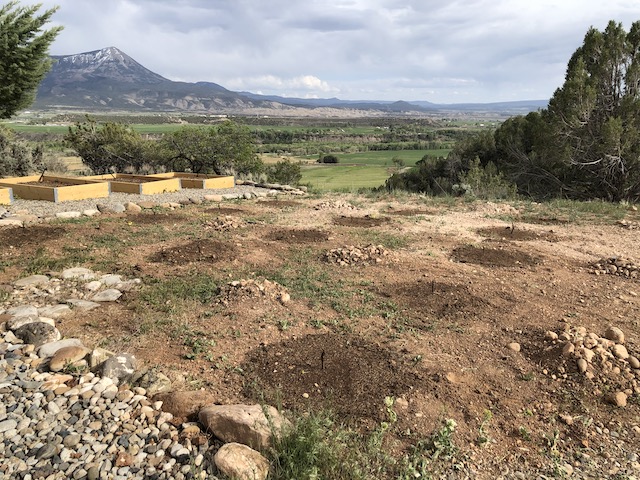
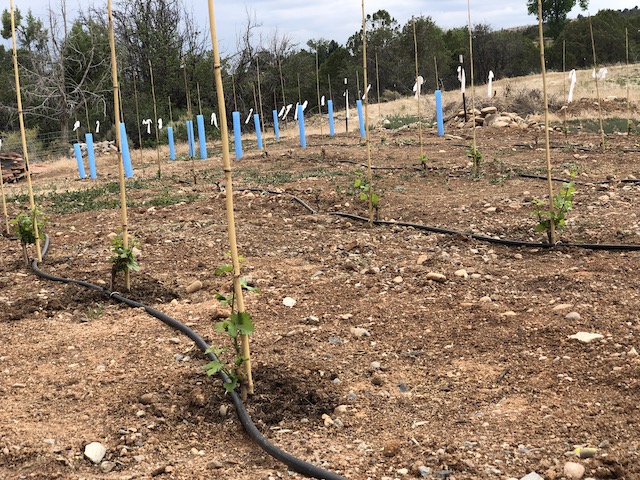
Upon irrigation completion, we left town for three weeks. While worrisome, there was no greater joy than coming back to green leaves springing from upright-growing vines. Weeds had fortuitously taken advantage of the loose soil around the new emerging vines. Hand pulling and hoeing were in my future.
Growing vines require structure and protection from adverse elements and critters. For first-year vines, bamboo poles work well to provide structure. Grow tubes provided protection. I used Blue-X tubes, which provide filtered sunlight promoting vine growth.
By late June, all the elements for summer growth were complete. Moving forward two months, weeding was my primary task. The vines grew well, with more than a 95 percent survival rate. I’ll take it!
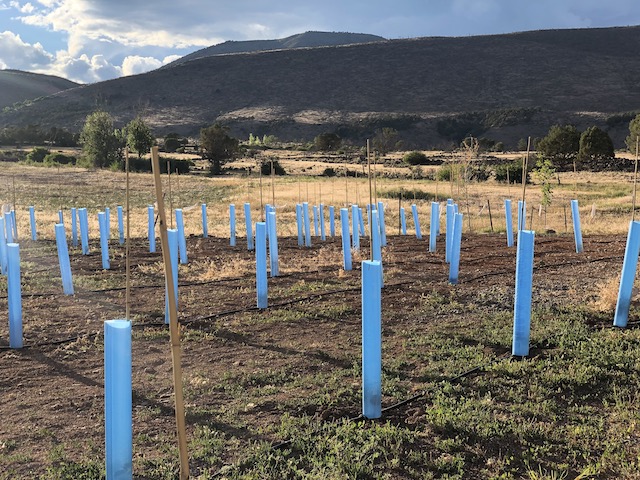
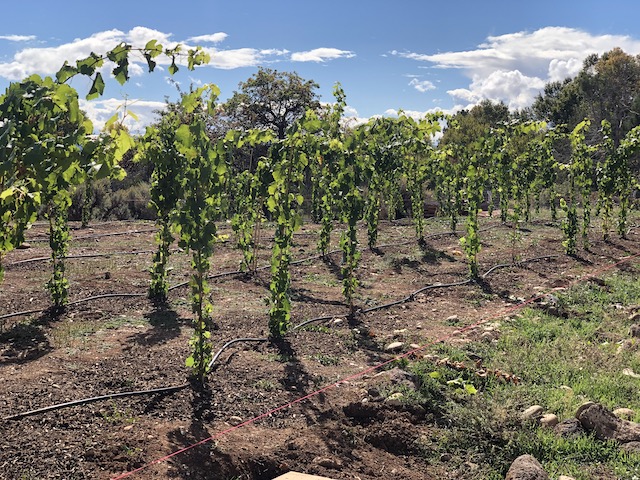
In early September, the growth tubes needed to be removed. I knew the vines were doing well. They were vigorously growing up and out of the tubes. Releasing them from the confines of the tubes was a wondrous sight.
Before fall set in, I had 10 cubic yards of neutral soil delivered. The soil needed to be mounded around the bottom of the vines. The mounded soil protects the vulnerable portion of the lower vine at the graft union. The valley’s colder winter temps in the single digits can kill young vines if not protected.
The other task requiring completion before fall fully expressed itself, was installing a wildlife fence. Fences protect from deer and elk and are typically 7 to 9′ tall. Without the fence, wildlife would be munching the vines during winter. Due to Colorado’s free-range laws, you must fence cattle out, otherwise, they’ll rummage through the vines as well. Upon fence completion, we realized how effective the fence was in defining space. I started envisioning sitting areas, raised garden beds, walkways, everything.
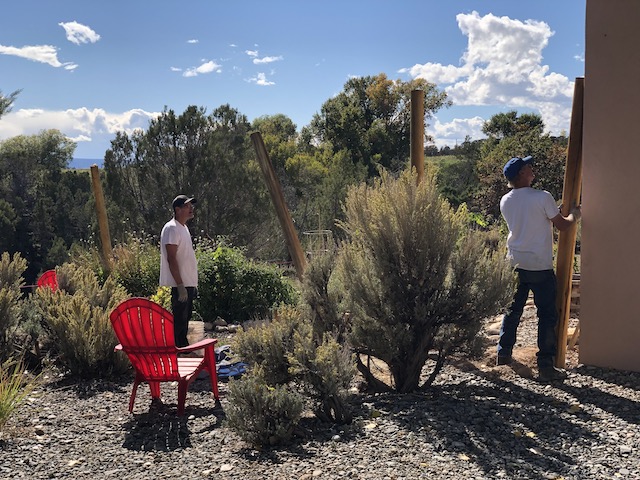

First year, mission accomplished! There were new and challenging problems solved. I met and got to know new folks. I worked my butt off. All that said, I was humbled. Humbled by the graciousness of everyone who helped and was a part of the adventure. Humbled by what’s possible. Humbled by nature. Humbled by a few things I could have done better.
Aside from the new vineyard and getting used to living in our new home in the valley, there is one additional item we mark the year by. Princess Leia, Airedale Terrier extraordinaire. She passed during the summer as the vines took hold. One life, giving to others. She led her best life “with the land”, and she is better in doggy heaven because of it. In the accompanying video, you’ll find her in the background helping me along. Thank you, Princess Leia!

